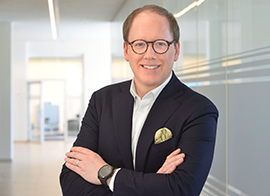June 01, 2023 - June 03, 2023
Berlin, Germany
Joint 14th ISFA World Congress & 4th E-ISFA European Congress
Joint 14th ISFA World Congress & 4th E-ISFA European Congress 01.06.-03.06.2023
May 16, 2023 - May 19, 2023
Paris, France
EuroPCR
EuroPCR 16.05.-19.05.2023
April 26, 2023 - April 29, 2023
Lisbon, Portugal
11th EuroELSO
11th EuroELSO 26.04.-29.04.2023
January 30, 2023 - February 02, 2023
Dubai, United Arab Emirates
Arab Health Congress
Arab Health Congress 30.01.-02.02.2023
October 21, 2023 - October 25, 2023
Milan, Italy
36th Annual Congress of ESICM
European Society of Intensive Care Medicine (ESICM) 21.10.-25.10.2023
October 19, 2023 - October 22, 2023
Taipei, Taiwan
23rd Congress of PENSA
Parenteral and Enteral Nutrition Society of Asia PENSA) 19.10.-22.10.2023
October 10, 2023 - October 14, 2023
Asunción, Paraguay
18th Congress of FELANPE
Congress of the Latin American Federation of Nutritional Therapy, Clinical Nutrition and Metabolism (FELANPE) 10.10.-14.10.2023
September 20, 2023 - September 22, 2023
Helsinki, Finland
19th EuGMS Congress
European Geriatric Medicine Society (EuGMS) 20.09-22.09.2023
September 11, 2023 - September 14, 2023
Lyon, France
45th ESPEN Congress
European Society for Clinical Nutrition and Metabolism (ESPEN) 11.09.-14.09.2023
June 03, 2023 - June 05, 2023
Glasgow, Scotland
Euroanaesthesia
European Society of Anaesthesiology and Intensive Care (ESAIC) 03.06.-05.06.2023

